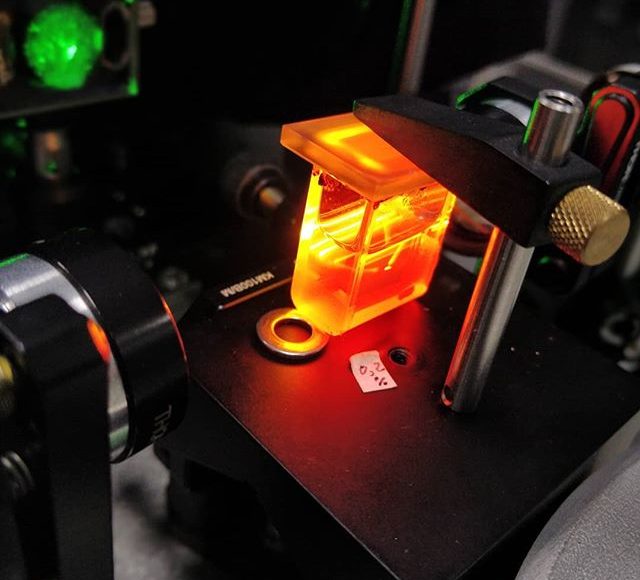Laboratatory of Laser Spectroscopy, Institute of Spectroscopy RAS

Laboratory of Laser Spectroscopy was founded in 1970 and its first head until December 2001 was Prof. V.S. Letokhov. Since 2002 the laboratory has been headed by Prof. V.I. Balykin. The scientific program of the Laboratory is based on original ideas on new methods of laser spectroscopy and selective action of laser radiation on matter. Presently, the main areas of scientific research of Laboratory Laser Spectroscopy are Ultra Cold Atoms & Atom Optics and Nanophotonics & Nanoplamonics
Prof. Balykin V.I.

Prof. Balykin V.I. - a specialist in atomic and laser physics, the author of more than 300 scientific papers, including two monographs and several reviews. Starting his career as Research associate in Institute of Spectroscopy, he then worked as Senior researcher and Leader of group of this Institute and where he currently holds a position of Head of laboratory of laser spectroscopy.
During V.I. Balykin scientific career he has been involved in numerous cooperation outside the homeland. From 1989 to 1991 Balykin V.I. is a fellow of the Humboldt Foundation in Heidelberg University, Germany (Prof. G. zu Putlitz). During this cooperation the outstanding results was obtained: the first realization of laser cooling of the relativistic ion beam. From 1991 to 1993 Balykin V.I. is a member of the reached group at the University of Constance, Germany (Prof. J. Mlynek). During this cooperation the outstanding results in the field of atom optics were obtained.
From 1996 Balykin V.I. and his Moscow group started the active cooperation with University of Electro-Communication, Tokyo, Japan (Prof. F. Shimizu, Prof. K. Hakuta). During this cooperation an approach has been developed for the deterministic control of single atoms and single photons and their effective interaction. Subsequent experimental implementations of such hybrid system “atom + nanofibere” showed the promise of its use for a wide class of various applications. Later, during Balykin V.I. visit of Bonn University, (Prof. D. Meschede) the approach was further developed and nowadays such system is seen as the elementary building block of a quantum information network.
Within the framework of the US Civilian Research and Development Foundation's grant program for joint research of Russian and American researchers, the group of Balykin V.I. and group of Prof. W. Phillips, National Bureau of Standards and Technology, USA conducted joint research in the field of ultracold atoms and atomic optics (from 2000 to 2007 years). The result of the cooperation was realization of Feynman's scalable nano manufacturing system.
He was a Research Fellow of Alexander von Humboldt Foundation in Max-Plank Institute of Nuclear Physics, Heidelberg, Germany (1989-1990); Senior Researcher at University Konstanz (1990- 1993); Visiting Professor of Institute for Laser Sciences, Tokyo, Japan (1995, 1997); Full Professor of University of Electro-Communications, Department of Physics, Japan(1996-1997, 2003); Visiting Professor of Seoul National University, Seoul, South Korea (1999-2000); Visiting Professor of Institute of Applied Physics, University Bonn, Germany (2001, 2005).
V. I. Balykin was awarded the Research Fellowship of Alexander von Humboldt Foundations, Germany (1989-1990) and he received Rozdestvenskii Prize of Russian Academy of Sciences (2001) “for the achievement of laser cooling and trapping of neutral atoms”. In 2021 V. I. Balykin was awarded the Galileo Galilei Award for “his outstanding contributions to the laser cooling, trapping, control and manipulation of the mechanical motion of atoms”.
180840, Russia, Troitsk, Fizicheskaya, 5

